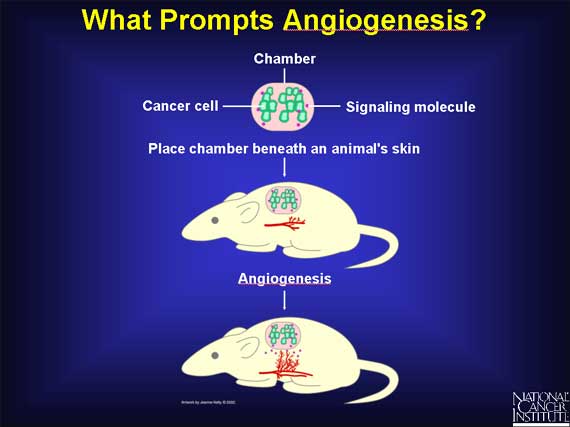|
In an experiment designed to find out whether molecules from the cancer cells or from the surrounding host tissues are responsible for starting angiogenesis, scientists implanted cancer cells in a chamber bounded by a membrane with pores too small for the cells to exit. Under these conditions, angiogenesis still began in the region surrounding the implant. Small activator molecules produced by the cancer cells must have passed out of the chamber and signaled angiogenesis in the surrounding tissue.

< Previous | Index | Next Slide > |